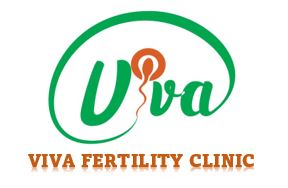
Definition
In Vitro Fertilization (IVF) has emerged as the preferred treatment for various forms of infertility. It is a type of Medically Assisted Reproduction (MAR) that involves retrieving human gametes to achieve fertilization outside the body. The primary goal of IVF is to enable patients to become pregnant using their own eggs or donor eggs and sperm from either their partner or a donor. IVF is an elective procedure recommended when other treatment options have failed or are not suitable.
Pituitary Down Regulation
To maintain control over your ovarian stimulation and prevent premature luteinizing hormone surges that could lead to early egg release from your follicles, we employ pituitary down regulation. This process involves using injectables known as GnRH analogues. GnRH agonist is started either on day 21 of the preceding cycle or on day 2-3 of your treatment cycle. While GnRH antagonist is started on cycle day 5, 6,7 or 8 and Continue until your last ovarian stimulation injection.
Controlled Ovarian Stimulation
Normally, a woman produces one mature egg per month in a menstrual cycle. However, the success of In Vitro Fertilization (IVF) depends on retrieving multiple eggs from the ovary. To achieve this, you will be placed on ovarian stimulatory medications called Gonadotropins is used to stimulate the ovary to produce multiple eggs. Here are the key points regarding ovarian stimulation:
Gonadotropin Injection:
- Start on cycle day 2 or 3.
- Administered subcutaneously for 10 to 12 days or until most of the recruited follicles measure 18–24mm in diameter. The process is monitored with ultrasound scan.
- When most follicles reach this size, a “trigger injection” induces final egg maturation.
- Depending on the stimulation protocol, the trigger medication can be:
- Human Chorionic Gonadotropin” (HCG)
- GnRH Agonist
- Combination of both
Egg Retrieval Procedure
The egg retrieval procedure takes place after the completion of ovarian stimulation. It is a timed process performed 36–38 hours after the ovulation trigger injection. At Viva Fertility Clinic, we conduct egg retrieval under general anaesthesia, aided by ultrasound guidance. Here are the key details:
Procedure Details:
- Duration: Egg retrieval procedure is usually short about 30 minutes. However, the duration is influenced by the number of matured follicles available in the ovaries.
- Anaesthesia: General anaesthesia is given.
- The is performed with the aid of Ultrasound machine using a long, thin needle to drain the content of the follicles
- Following egg retrieval, progesterone injection is started to prepare the uterus for implantation of the embryo.
- Recovery: You be allowed to recover for about an hour or more and only allowed to return home if deemed fit.
- On the same day, your partner will be required to produce a fresh semen sample or If you have partner sperm frozen, it will be used to fertilize your eggs.
Insemination Of Egg With Sperm And Embryo Culture
A few hours post egg retrieval, the collected eggs are inseminated with sperm that has been aseptically prepared. The sperm may come from your spouse/partner or, if clinically indicated, a donor. The insemination may be conventional or performed via Intra-Cytoplasmic Sperm Injection (ICSI) if clinically indicated. The inseminated eggs are then cultured overnight in an incubator at 37°C and 6% CO2. Fertilization is assessed the following day.
Normally fertilized eggs (zygotes) are selected and returned to the incubator for further culturing, while immature, unfertilized, and abnormally fertilized eggs are discarded.
Embryo Transfer (ET) Procedure
Embryo transfer is the process of transferring one or more of your embryos into your uterus using an embryo transfer catheter. The procedure may be performed on day 2, day 3, or day 5 post-egg retrieval. It is a painless and non-invasive procedure, although slight discomfort may be experienced. Anti-anxiety medications maybe administered 1 to 2 hours before your transfer; if clinically indicated, steroids may also be prescribed before and after the embryo transfer. Potential side effects of steroids include, but are not limited to, an increased risk of infection.
At Viva Fertility Clinic, we only perform blastocyst (day 5) transfers, and we do not transfer more than three embryos per transfer unless clinically indicated. The number of embryos to be transferred will be discussed with you by members of our team before the procedure is carried out. Option to freeze viable left-over embryos will be provided to you.
Post ET Endometrial (Luteal) Support
Estradiol and progesterone medications continued for 2 weeks. If pregnancy test is positive, these medications are continued until 12 weeks gestation.
Note: We provide luteal support from the day of embryo transfer until the day of your pregnancy test. If the pregnancy test is positive, it is mandatory to start a luteal support program.
When to Consider IVF
Common Reasons to Consider IVF
The goal of IVF is to offer individuals or couples the opportunity to conceive and experience the joys of parenthood, particularly when other fertility treatments have been unsuccessful or are not viable options.
